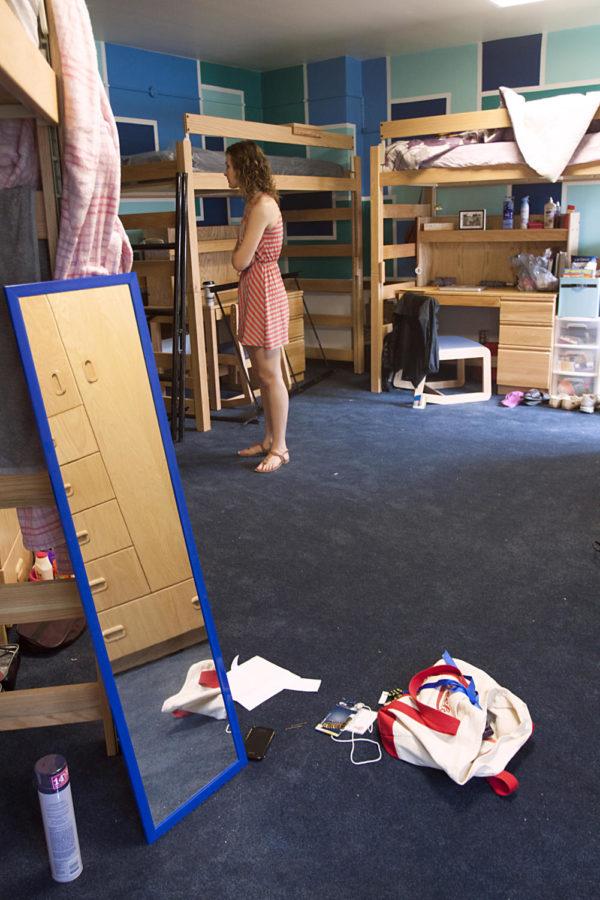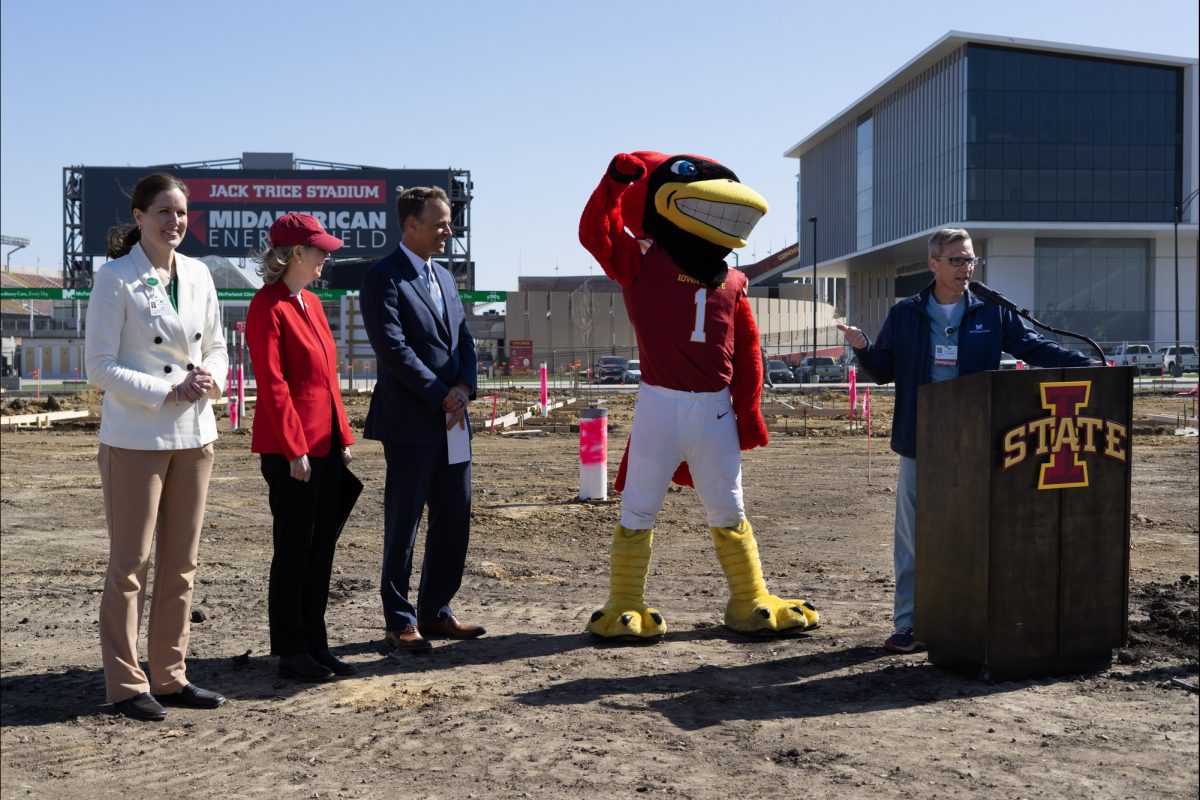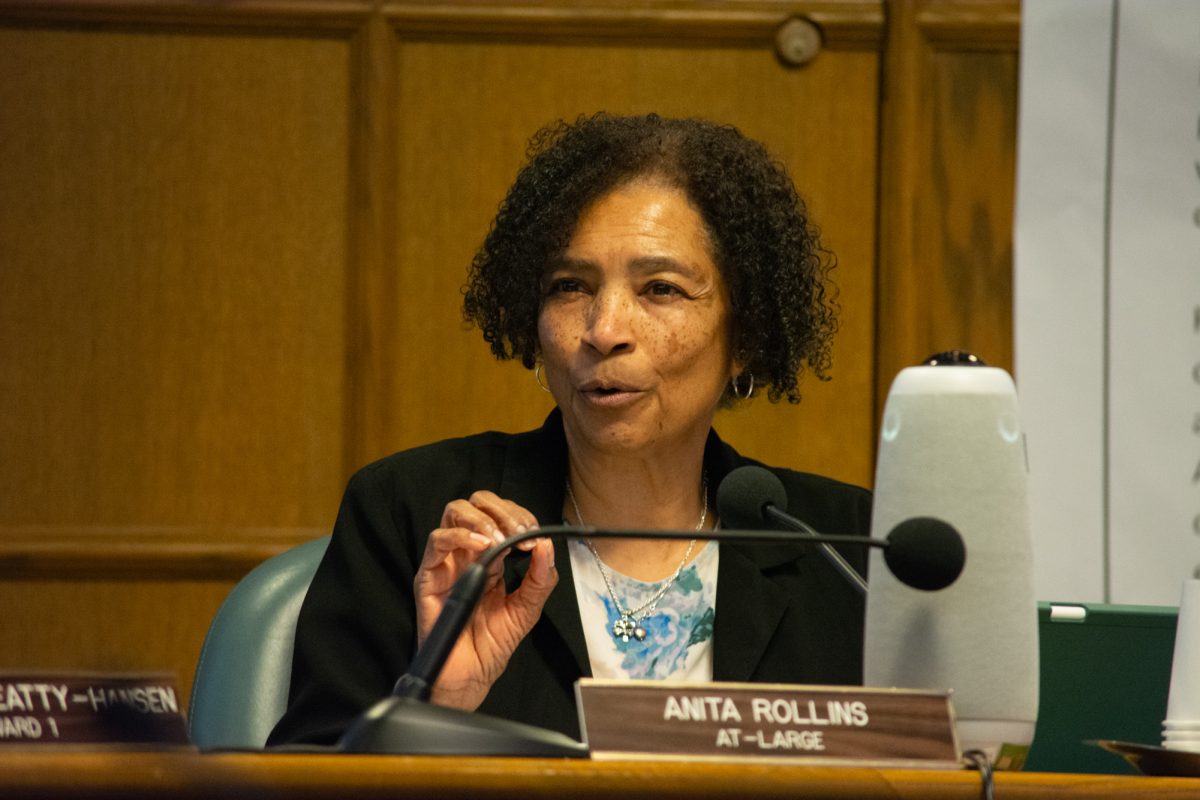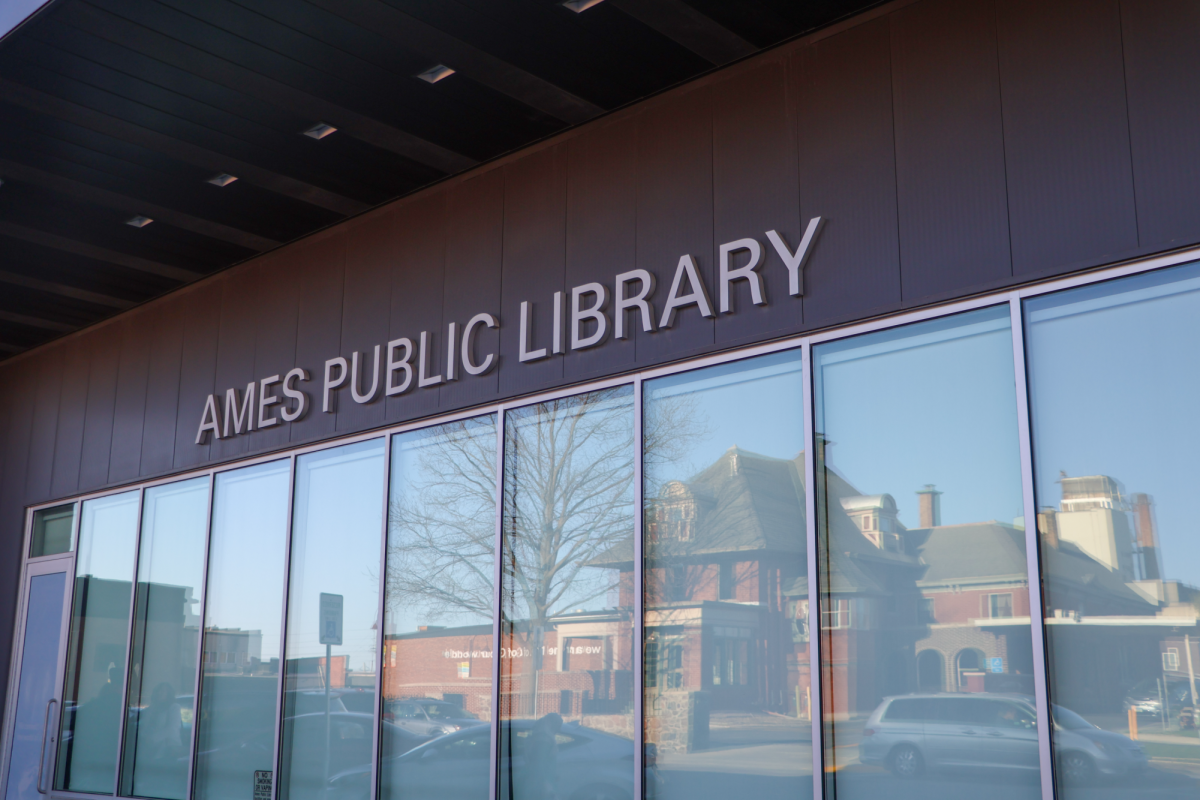Creative solutions: Finding space for Iowa State’s largest enrollment
Photo: Liz Zabel/Iowa State Dail
Stephanie Cox, freshman in political science, moved into a den dorm room in Friley – Henderson Aug 14, 2012. The den dorms are much bigger than normal dorms, with enough space for 4 people instead of 2. Photo: Liz Zabel/Iowa State Daily
August 20, 2012
Students living on campus this semester can safely say they are part of university history.
This year ISU students are part of the largest enrollment ever at Iowa State. They also have more neighbors in their respective residence halls than any other semester in history.
This fall there are approximately 10,572 students living on campus, and nearly half — 5,120 — are first year students. With so many people wanting to attend Iowa State, the administration has come up with some creative solutions to accommodate them all.
Pete Englin, director of the Department of Residence, said: “We did not want to be in a position where we turned people away.”
Instead, he said, the university has taken most of the dens that had been social space on residence hall floors and turned them into four-person rooms. They have also taken rooms that had been larger two-person rooms and turned them into three and four-person rooms, which they had likely been in the past. There are also more students living in Wallace and Wilson Halls than in recent semesters.
Tom Hill, senior vice president for Student Affairs, said that as a public university, Iowa State has a duty to educate as many Iowans as possible, in addition to those wanting to become Iowans while they study. He said that while it can sometimes put a crunch on the system: “We hope the students understand.”
Many students living in the dens say they understand and are quite happy with their situation.
Lawrence Edeen, sophomore in aerospace engineering; Kyle Castle, freshman in pre-business; and Jay Watts, sophomore in engineering, share a den on the seventh floor of Larch.
Watts said he does not mind the extra roommates. “I think it’s better than a regular room: We have a lot more space.”
When asked if they plan to move out if they could, Edeen said: “If they let us stay, I wouldn’t really mind.”
They have even made friends with some of the other groups who live in the dens and shared notes on how best to arrange their space.
Englin said the residences are pretty much at maximum capacity, but providing a stellar experience for students has taken precedence over maintaining a certain amount of open space.
“We haven’t been focusing on ‘being full,'” Englin said. “What we focus on is how we can help students be successful.”
Hill said the residence hall experience is important for new students.
“We would like to be able to offer students a chance to live in the residence halls,” Hill said. “It’s more important for students to have the residential experience rather than say we need a certain percent of space unoccupied so people can move around.”
Hill referred to studies that say students who spend their first year on campus have a higher graduation rate and are much more satisfied with their experience over all.
“We know that first year is important; [the residence hall] experience is a significant experience for ISU students,” Hill said. “The mere fact that we have so many first year students wanting to stay on campus says something.”
Both Hill and Englin said that what it says is Iowa State is becoming a very attractive choice for new students. Both Hill and Englin say the administration knows this, but sustainable growth is as important as the quality of the education.
“There’s a question of how long this [increased] enrollment will continue,” Englin said. “We had two large ‘bubble’ classes in 2000 and 2001. … The concern was, following those classes, we saw a drop in the numbers. Because we had to temporarily gear-up, people were worried that we were going to make long-term commitments that weren’t sustainable. We’re planning the same way now, we’re being conservative.”
The university, Englin said, does not want to spend a lot of money to build new residence halls that may go half empty in a few years time. He says passing that cost on to the students would not be fair.
“So we’ve been reinvesting a little at a time; we are totally self-funded,” Englin said. “So we don’t want to overcharge students; we want a good price point and not to overextend ourselves.”
Both Hill and Englin said the issue has a lot of complicating factors, rather than just building more space. Englin mentioned the topic of tuition set-aside and how that could affect future enrollment.
“The Board of Regents is focusing the tuition set-aside question and have indicated, at least preliminarily, that they’ll try and have some solutions to us at the end of the semester,” Englin said. “That will help with our modeling and will tell us where we need to be in the future.”
Hill said the number of enrolling students can change from year to year, and within that, there is also a fluctuating number of students wanting to live on campus.
But the university is optimistic about the growth, and they are planning to build more living space. On Aug. 3, the Iowa Board of Regents authorized the university to begin planning space for an additional 650 people at Frederiksen Court.
“The idea of adding apartments, those are going to be attractive to students for the next 20 years,” Englin said. “We can build those less expensively than we can build residence halls.”
And for those students who might want to move soon, or during the semester, the administration thinks that can happen.
“We’ll lose between 800 and 1,100 students in on campus housing from fall to spring — graduations, internships, practicum, study abroad, folks getting married,” Englin said. “At that point we’ll see some students move out of the dens.”
He said the anxious ones can even keep an eye on the availability of rooms.
“The way our assignment system works [is] anybody who lives with us can go in at any time and see all the vacancies.”
At the end of any discussion, though, Hill said that student experience is the most important factor in decisions that the administration makes. He says that if students need more residence room, Iowa State will build it. He said he wants to make sure that everyone who wants to be a part of the university system has chance to do so.
“If we have even one student that falls though the cracks, it’s one too many,” Hill said.







